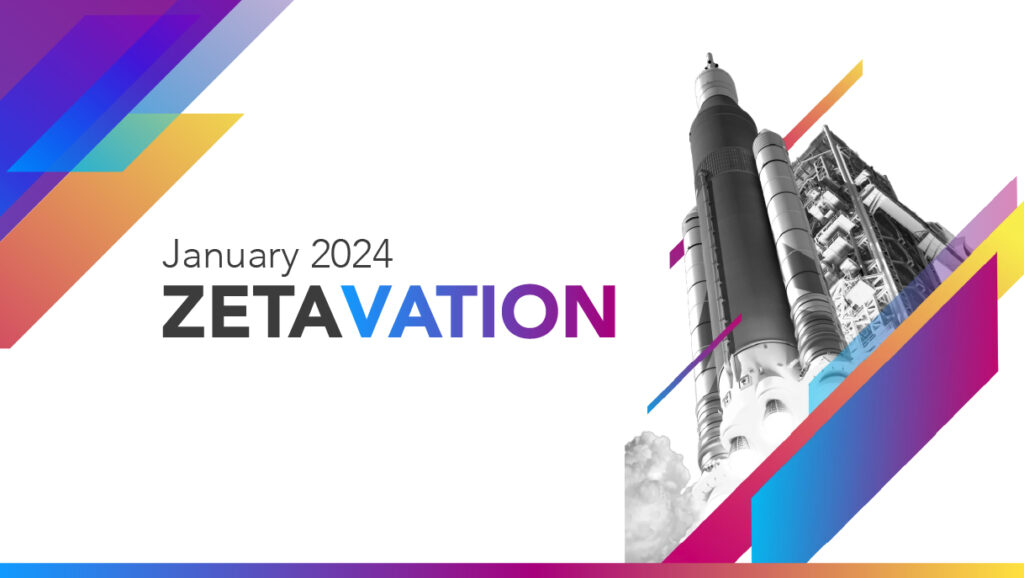Reduce the Distance Between Data and Action by Combining Agents with Intelligence
Right now, AI is driving a fundamental shift in marketing. It’s been many years, decades even, since a new technology has so drastically changed how businesses operate. AI is here to stay, and the early adopters will be the ones that win the day. As we collectively move into this brave new world, the Friendship Seven space mission can teach us an important lesson about this moment.
In 1962, astronaut John Glenn made history as the first American to orbit Earth. But he didn’t do it alone. The mission’s success relied on the calculations of many NASA mathematicians including the brilliant Katherine Johnson. Glenn so trusted Johnson’s work that he refused to fly without her verification on the calculations, famously declaring, “If she says they’re good, I’m ready to go.”
This partnership between action and intelligence made history. Glenn’s skill as a pilot brought the mission to life, while Johnson’s mathematical precision made it possible. It’s the same in marketing today—action without intelligence is risky, and intelligence without action is wasted.

Understanding AI Agents
When we talk about agents in marketing, we’re referring to autonomous digital systems that don’t just analyze data but also take targeted action in response to it. These agents operate with a clear purpose: to close the gap between insight and execution. Unlike traditional systems that require human intervention to act on intelligence, agents are designed to sense, decide, and execute tasks in real time.
For example, one AI agent might write email subject lines, another builds audience segments, and a third adjusts campaign timing. But these agents aren’t just tools running predefined scripts—they’re adaptive systems that make decisions based on the intelligence they’re fed. This makes them fundamentally different from conventional tools or workflows that merely integrate machine learning models.
What Makes Agents Unique?
- Autonomy and Decision-Making: Agents are not passive systems waiting for human input; they are autonomous actors designed to sense their environment, make decisions, and execute tasks without requiring manual intervention. While machine learning provides insights (the “what” or “why”), agents provide the operational autonomy to determine the “how” and “when” in real time.
- Real-Time Orchestration Across Ecosystems: Agents excel at coordinating actions across disparate systems and channels. For example, an agent that identifies a high-value customer doesn’t just adjust an email campaign; it also fine-tunes ad spend, updates product recommendations, and even informs sales teams—all in real time.
- Feedback Loops for Continuous Improvement: Every action agents take generates data, which becomes part of an iterative feedback loop. Agents don’t just act; they learn from their actions, improving future decision-making and execution.
- Prioritization and Multi-Agent Collaboration: In complex environments, agents work together to prioritize actions and allocate resources dynamically. For example, one agent might predict a trend, another might assess its business impact, and a third might implement the optimal response, all without human intervention.
How Agents Close the Gap Between Insight and Action
The real innovation with agents lies in their ability to immediately act on intelligence. Traditional marketing workflows are bottlenecked by analysis paralysis: data gets collected, trends are identified, strategies are debated, and only then does action occur—often too late. Agents eliminate these delays by collapsing this timeline, integrating data interpretation with instant execution.
Where machine learning models might identify a trend (e.g., customers who visit a site three times in a week are likely to convert), agents go further—they deploy a real-time response. They might automatically send a personalized email, adjust product recommendations, or even shift ad spend, ensuring that opportunities aren’t just observed but seized.
Leading Indicators: Turning Data into Action in Real Time
Agents thrive on leading indicators, those subtle patterns in customer behavior that signal potential opportunities. A machine learning model might detect that customers who spend more than three minutes on a product page are highly likely to purchase within 48 hours. An agent, equipped with this intelligence, takes it one step further:
- It proactively sends a tailored offer to the customer before they leave the site.
- It updates ad retargeting strategies to prioritize similar users.
- It flags this behavior as a trigger for future campaigns, continuously refining its approach.
This fusion of intelligence (pattern recognition) and action (immediate response) shifts marketing from reactive to proactive. Where traditional ML systems excel at identifying insights, agents ensure those insights translate into measurable outcomes in real time.
Agents in Action: Intelligence + Decision-Making + Execution
The power of agents becomes evident when we consider their end-to-end capabilities. Imagine an agent that notices high-value customers browsing winter coats in July. It doesn’t just log this behavior for later analysis—it takes action immediately:
- It identifies similar customers and adjusts ad targeting in real time.
- It triggers follow-up emails tailored to this niche behavior.
- It dynamically modifies product recommendations across channels to align with seasonal trends.
This isn’t just machine learning predicting a trend; it’s an autonomous system orchestrating a coordinated, data-driven response across your entire marketing ecosystem.
From Insight to Execution: Why Agents Are Game-Changers
Unlike traditional AI systems, which rely on humans to bridge the gap between knowing and doing, agents are built to make decisions and execute tasks autonomously. Machine learning provides the “brains” to uncover patterns and insights, but agents serve as the “hands” that act on this intelligence, making marketing smarter, faster, and more adaptive.
By tightly integrating intelligence with execution, agents transform the relationship between brands and customers. Each interaction becomes part of a continuous dialogue—one that evolves in real time, informed by deep understanding and delivered with precision.
The Future is Action + Intelligence
Think about Friendship Seven again. Glenn couldn’t orbit Earth without Johnson’s calculations, and Johnson’s calculations meant nothing without Glenn’s action. The same is true in marketing today. The best data in the world doesn’t help if you can’t act on it quickly. The fastest actions won’t succeed if they’re not guided by intelligence.
By combining agents with intelligence, we remove the gap between knowing and doing. Your marketing becomes both smarter and faster. Agents spot patterns humans might miss, while intelligence ensures those insights turn into effective action. This combination transforms marketing from a series of campaigns into a continuous dialogue with customers, each interaction informed by deep understanding and executed with precision.
The technology exists. The opportunity is here. The question isn’t whether to adopt AI agents, but how quickly you can put them to work. Learn more about Zeta’s AI capabilities.
- Understanding AI Agents
- What Makes Agents Unique?
- How Agents Close the Gap Between Insight and Action
- Leading Indicators: Turning Data into Action in Real Time
- Agents in Action: Intelligence + Decision-Making + Execution
- From Insight to Execution: Why Agents Are Game-Changers
- The Future is Action + Intelligence



Want to see Zeta in action?


